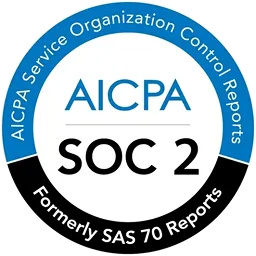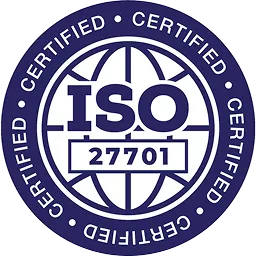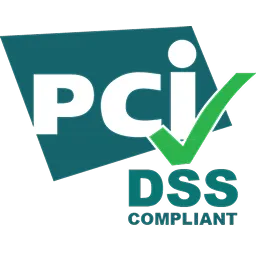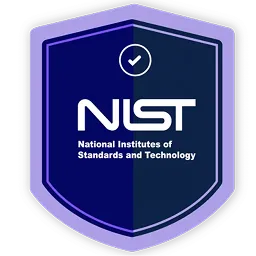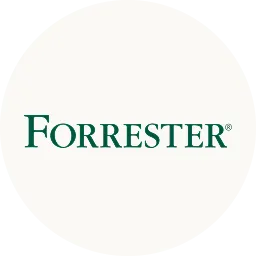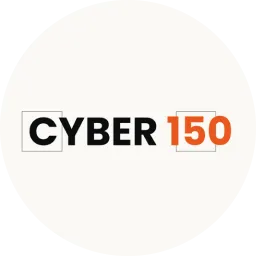ISO 27001 and SOC 2 are prominent frameworks that were introduced to enhance the effectiveness of an organization's security posture. Although both frameworks address data security concerns, they differ in purpose, scope, and compliance approach. In this article, we will explore how ISO 27001 vs SOC 2 differs in detail.
Compliance frameworks like ISO 27001 and SOC 2 exist to ensure organizations adhere to industry best practices, protect sensitive data, and foster stakeholder trust. While both these compliance regulations ultimately aim to safeguard organizations' sensitive data, the methods and strategies they enforce to achieve this goal vary significantly.
What are these methods and strategies? How are they different? Which one should you choose? We've provided detailed explanations of each framework (i.e., ISO 27001 vs SOC 2) to address these questions and listed five major differences.
So, let's start by understanding what ISO 27001 and SOC 2 are.
What Is ISO 27001?
ISO 27001 is an internationally recognized standard that provides a comprehensive framework for establishing, implementing, maintaining, and continuously improving an Information Security Management System (ISMS). Its objective is to ensure an organization's confidentiality, integrity, and availability of information assets.
Furthermore, this standard outlines a systematic approach to managing information security risks. It encompasses 114 security controls organized into 14 control sets. These controls span various aspects of information security, including asset management, access control, operational security, incident management, and compliance.
Key Benefits of ISO 27001 Certification
Below are the 4 key advantages of ISO 27001 certification:
- Demonstrates Commitment to Information Security: ISO 27001 certification proves to stakeholders, clients, and regulatory bodies that the organization prioritizes information security and has implemented robust security controls.
- Competitive Advantage: In industries where data security is critical, ISO 27001 certification can provide a competitive edge, instilling confidence in potential clients and partners.
- Compliance with Regulations: Many industries and regions have regulations that mandate specific information security practices, and ISO 27001 certification can help organizations meet these requirements.
- Continuous Improvement: The standard promotes a culture of continuous improvement, ensuring that the ISMS remains effective and adaptable to evolving threats and business requirements.
What Is SOC 2?
SOC 2 (Service Organization Control 2) is a widely recognized auditing framework developed by the American Institute of Certified Public Accountants (AICPA). It is specifically designed to assess the controls and processes of service organizations that store, process, or transmit sensitive data.
The SOC 2 framework is also based on the Trust Service Criteria (TSC), which outlines five fundamental principles: security, availability, processing integrity, confidentiality, and privacy. Service organizations can choose to be audited against one or more of these criteria, depending on their specific requirements and the services they provide.
Furthermore, SOC 2 audits result in the issuance of two types of reports:
- Type I Report: Evaluate the design and implementation of controls at a specific time.
- Type II Report: Assesses the operating effectiveness of controls over a specified period, lasting from six to twelve months.
These reports provide valuable insights into the service organization's ability to maintain adequate controls and safeguard sensitive data, enabling clients and stakeholders to assess the associated risks.
Key Benefits of SOC 2 Compliance
Below are the 4 key advantages of SOC 2 compliance:
- Demonstrates Commitment to Data Security: SOC 2 reports assure clients and stakeholders that the service organization has implemented appropriate controls to protect sensitive data.
- Facilitates Regulatory Compliance: SOC 2 reports can help organizations demonstrate compliance with various regulatory requirements, such as HIPAA, PCI DSS, and GDPR.
- Fosters Trust and Confidence: By undergoing regular SOC 2 audits, service organizations can instill trust and confidence in their clients, strengthening their business relationships.
- Continuous Improvement: The SOC 2 framework promotes ongoing monitoring and improvement of controls, ensuring that security measures remain effective and aligned with industry best practices.
After going through the definition and key benefits, you may have understood the basic difference between ISO 27001 vs SOC 2. However, to provide you with further clarity, we've compared both standards based on different criteria
Key Differences between ISO 27001 and SOC 2
Despite their similarities, ISO 27001 and SOC 2 differ in several key aspects.
1: Purpose and Scope
- ISO 27001 provides a comprehensive framework for establishing, implementing, maintaining, and continually improving an organization's Information Security Management System (ISMS). It addresses a wide range of security controls and processes, covering all aspects of information security within the organization. ISO 27001 is applicable to any type of organization, regardless of its size, industry, or nature of business.
The standard follows a risk-based approach, requiring organizations to systematically examine their information security risks, considering the threats, vulnerabilities, and impacts. Based on this risk assessment, organizations must implement appropriate controls to mitigate identified risks. The standard also emphasizes the importance of continuous improvement through regular monitoring, reviewing, and updating of the ISMS. - SOC 2, on the other hand, is specifically designed to assess the controls and processes of service organizations that handle sensitive data, particularly those providing services in the cloud, data centers, and other outsourced services. It evaluates the effectiveness of controls related to the Trust Service Criteria (TSC), which include security, availability, processing integrity, confidentiality, and privacy. SOC 2 reports are unique to each organization and tailored to the specific services provided.
These reports are crucial for organizations that want to demonstrate their commitment to data protection to clients and stakeholders. SOC 2 compliance involves a thorough evaluation by an independent third-party auditor, who assesses the design and operating effectiveness of the organization's controls over a specified period. This evaluation can result in two types of reports: Type I, which describes the organization's systems and the suitability of the design of controls at a specific point in time, and Type II, which assures the operating effectiveness of the controls over a period.
2: Framework Structure
ISO 27001 outlines 114 security controls organized into 14 control sets, each addressing different aspects of information security. These control sets include:
- A.5 Information Security Policies - Providing direction and support for information security in accordance with business requirements and relevant laws and regulations.
- A.6 Organization of Information Security - Establishing a management framework to initiate and control the implementation and operation of information security within the organization.
- A.7 Human Resource Security - Ensuring that employees and contractors understand their responsibilities and are suitable for the roles for which they are considered.
- A.8 Asset Management - Identifying organizational assets and defining appropriate protection responsibilities.
- A.9 Access Control - Ensuring only authorized individuals have access to information and information processing facilities.
- A.10 Cryptography - Using cryptographic controls for the protection of information.
- A.11 Physical and Environmental Security - Preventing unauthorized physical access, damage, and interference to the organization's information and information processing facilities.
- A.12 Operations Security - Ensuring the correct and secure operations of information processing facilities.
- A.13 Communications Security - Protecting the organization's information in networks and its supporting information processing facilities.
- A.14 System Acquisition, Development, and Maintenance - Ensuring that information security is integral to information systems across the entire lifecycle.
- A.15 Supplier Relationships - Protecting the organization's assets that are accessible by suppliers.
- A.16 Information Security Incident Management - Ensuring a consistent and effective approach to managing information security incidents.
- A.17 Information Security Aspects of Business Continuity Management - Embedding information security into the organization's business continuity management systems.
- A.18 Compliance - Ensuring compliance with legal, statutory, regulatory, and contractual obligations related to information security.
SOC 2 is based on the Trust Service Criteria (TSC), which encompass five principles:
- Security - The system is protected against unauthorized access (both physical and logical).
- Availability - The system is available for operation and use as committed or agreed.
- Processing Integrity - System processing is complete, valid, accurate, timely, and authorized.
- Confidentiality - Information designated as confidential is protected as committed or agreed.
- Privacy—Personal information is collected, used, retained, disclosed, and disposed of in accordance with the commitments in the entity's privacy notice and with criteria set forth in generally accepted privacy principles (GAPP).
Service organizations can choose to be audited against one or more of these criteria based on their specific needs and the nature of their services. The SOC 2 framework is flexible, allowing organizations to select the most relevant operational and client expectations criteria. The audit process evaluates the design and effectiveness of controls to meet the selected criteria, ensuring that the organization's services meet the defined data protection and operational integrity standards.
3: Compliance vs. Certification
ISO 27001 Certification: To achieve ISO 27001 certification, organizations must undergo a rigorous assessment process conducted by an accredited third-party certification body. The certification process involves several stages, including:
- Pre-audit (optional): An initial gap analysis to identify areas that need improvement before the formal certification audit.
- Stage 1 Audit: This is a review of the organization's ISMS documentation to ensure it meets the standard's requirements.
- Stage 2 Audit: An in-depth evaluation of the implementation and effectiveness of the ISMS, including onsite inspections, interviews, and testing of controls.
- Certification Decision: The certification body decides whether to grant ISO 27001 certification based on the audit findings.
- Surveillance Audits: Regular audits (usually annually) to ensure ongoing compliance with ISO 27001.
- Recertification Audit: Conducted every three years to renew the certification.
This certification validates the effectiveness of the organization's ISMS and demonstrates its commitment to protecting sensitive information and enhancing trust with clients and stakeholders.
SOC 2 Attestation: In contrast, SOC 2 audits result in the issuance of attestation reports, which independently assess the service organization's controls and their effectiveness over a specified period. The SOC 2 audit process involves:
- Readiness Assessment (optional): A preparatory review to identify gaps and readiness for the formal SOC 2 audit.
- Type I Audit: This evaluation evaluates the design of controls at a specific point in time, providing assurance that controls are suitably designed to meet the selected Trust Service Criteria.
- Type II Audit: Assesses the operating effectiveness of controls over a period (typically six months to a year), providing assurance that controls are not only suitably designed but also operating effectively over time.SOC 2 does not offer a formal certification process like ISO 27001. Instead, the resulting attestation reports (Type I and Type II) serve as evidence of the organization's commitment to data protection and operational effectiveness. These reports often assure clients and stakeholders of the organization's robust control environment.
4: Geographic Focus
- ISO 27001: ISO 27001 is an international standard developed by the International Organization for Standardization (ISO) in collaboration with the International Electrotechnical Commission (IEC). This standard is part of the ISO/IEC 27000 family of standards and is widely recognized and adopted globally. Organizations across various industries and countries implement ISO 27001 to establish robust information security management systems. ISO 27001's global acceptance is due to its comprehensive framework, which aligns with various national and industry-specific regulations and best practices. This widespread recognition helps multinational organizations standardize their information security practices and facilitates compliance across different jurisdictions.
- SOC 2: SOC 2, established by the American Institute of Certified Public Accountants (AICPA), is gaining recognition worldwide but is predominantly used and accepted in North America, particularly in the United States. SOC 2 reports are especially relevant for service organizations that provide cloud computing, data hosting, and other technology services. Due to stringent data protection and privacy requirements in the U.S., these reports are becoming increasingly important for businesses that operate in or with clients in the U.S. While SOC 2 is recognized outside of North America, its adoption is more prevalent among U.S.-based companies and those seeking to do business with U.S. clients, as it aligns closely with American regulatory and market expectations.
5: Flexibility
- SOC 2: SOC 2 provides significant flexibility for service organizations by allowing them to select and be audited against specific Trust Service Criteria (TSC). The five TSCs include security, availability, processing integrity, confidentiality, and privacy. Organizations can choose one or more criteria based on their unique business requirements and the specific services they offer.
This customization enables organizations to focus their compliance efforts on areas most relevant to their operations and client expectations. The flexible nature of SOC 2 audits makes them adaptable to a wide range of service organizations, particularly those in technology and cloud services, where business models and service offerings can vary significantly. - ISO 27001: ISO 27001 follows a structured and systematic approach to information security management, with predefined security controls and requirements outlined in Annex A. The standard specifies 114 controls organized into 14 control sets, addressing various aspects of information security.
While organizations have the flexibility to tailor the implementation of these controls to their specific needs and risk profiles, the overall framework is more rigid compared to SOC 2. ISO 27001 requires a comprehensive risk assessment to identify relevant risks and appropriate controls, ensuring that all areas of information security are addressed systematically. This structured approach helps organizations achieve a thorough and consistent level of information security, but it may offer less customization than SOC 2 in selecting specific assessment criteria.
After understanding the differences between ISO 27001 and SOC 2, you may want to determine which compliance certification to obtain for your organization. Below, we have discussed how to do so.
Which Compliance Standard Is Right For Your Organization?
When deciding between ISO 27001 and SOC 2, consider the following questions:
- Where are your customers located? SOC 2 is prevalent in North America, while ISO 27001 is widely accepted worldwide.
- Which standard is more common in your customers’ industries? Certain sectors prefer SOC 2, while others favor ISO 27001.
- Do you already have an established Information Security Management System (ISMS)? If your data security measures are in the early stages, ISO 27001 can assist in building one from scratch, whereas SOC 2 helps enhance existing systems with best practices.By answering the above questions, you can determine the compliance standard that best suits your organization:Note: If your goal is to target global and North American markets across various industries, adhering to just one standard may not fulfill all your customers’ requirements. Many organizations find value in obtaining both ISO 27001 and SOC 2 certifications.However, regardless of the compliance standard you choose, you need to undergo a multiple-step process and fulfill different security mandates. These tasks can’t be performed manually because they will consume a lot of time and give you inaccurate results, which will further impact the compliance process. So, one such solution that can help automate and simplify the compliance process is Zluri. What is Zluri? How does it work? Let’s find out.
Zluri: Your Ultimate Solution To Comply With Data Security Regulations
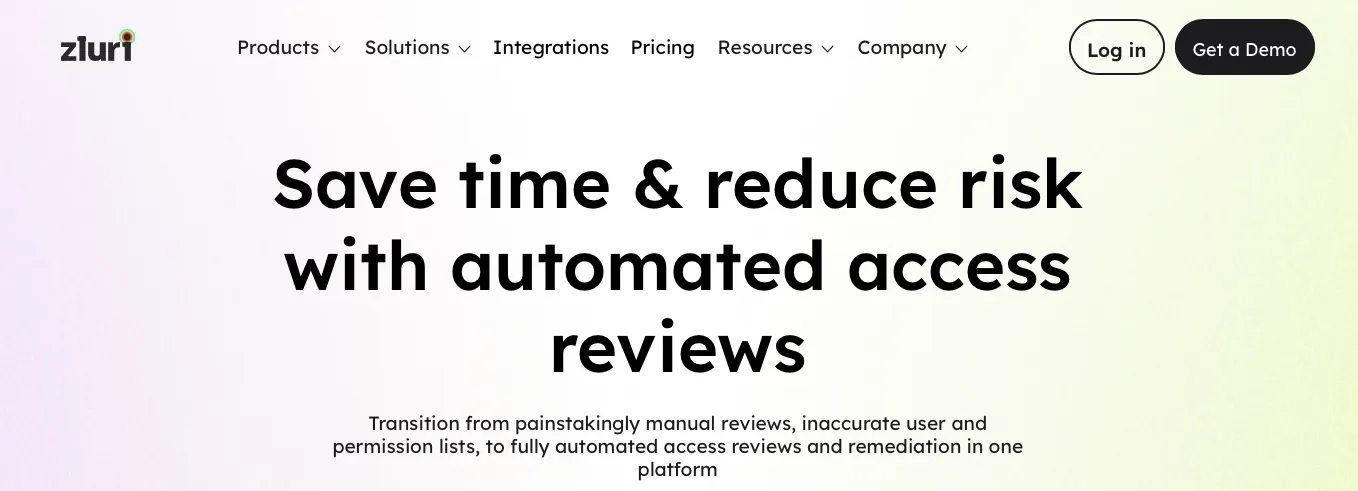
While adhering to compliance frameworks like ISO 27001 and SOC 2 is crucial, managing the complexities of user access reviews can be daunting for IT teams. This is where Zluri's Access Review solution comes into play. It offers a comprehensive and automated approach to streamlining the access review process while ensuring compliance with industry standards.
Zluri's Access Review enables your IT teams to automate the certification process easily with just a few clicks. The platform automatically evaluates user access based on predefined rules, saving the IT team significant time and effort. Further, your team can also create workflows to trigger actions to restrict or revoke access if anyone holds unauthorized permissions.
However, that's not all; Zluri access review offers other benefits as well, which help successfully achieve security regulatory requirements, such as:
- Continuous Monitoring of Access Rights By Conducting Access Review Audits
Zluri Access Review performs regular access reviews, enabling your team to oversee and assess users' current access rights. This process ensures that users retain only the permissions they need, preventing unnecessary or excessive access. By maintaining strict control over access rights, your team can enhance security and ensure compliance with best practices.
- Conducts Recurring Certification
It also schedules regular access reviews (e.g., every 3-6 months) to ensure continuous assessment and alignment of access permissions. This ongoing process minimizes the risk of stale permissions and ensures compliance.
- Documents the Review Process
The system also lets your team document the entire access review process, including any actions to adjust unnecessary user access rights. This documentation helps showcase your organization's effective control measures for maintaining data integrity and ensuring compliance with data security laws and regulations, such as ISO 27001 and SOC 2.
Book a demo now to learn more about Zluri's Access Review solution and understand how we can help your business.
FAQs
1: Can an organization be compliant with both ISO 27001 and SOC 2?
Yes, many organizations choose to comply with both standards to meet different customer and regulatory requirements, leveraging the strengths of each framework.
2: What similarities do ISO 27001 and SOC 2 have?
ISO 27001 and SOC 2 share several similarities: both aim to protect sensitive information by ensuring data confidentiality, integrity, and availability. They focus on common areas like access control, risk management, incident response, and operational security. Additionally, both require independent third-party audits to verify compliance and emphasize continuous improvement through regular review and enhancement of security controls and processes.









.svg)



